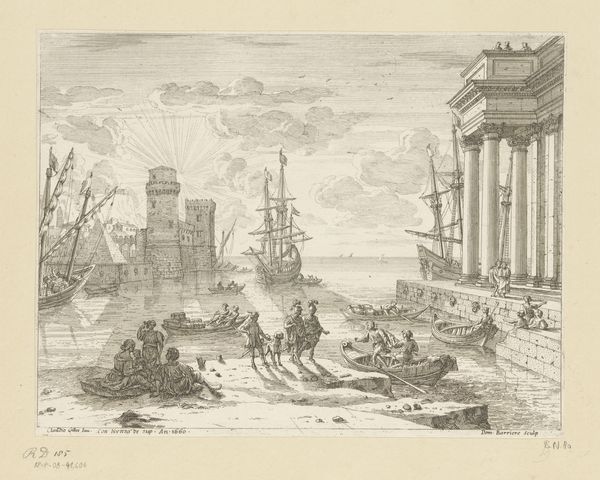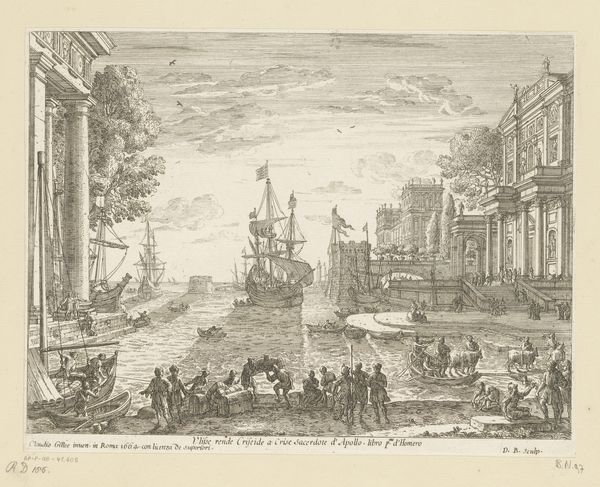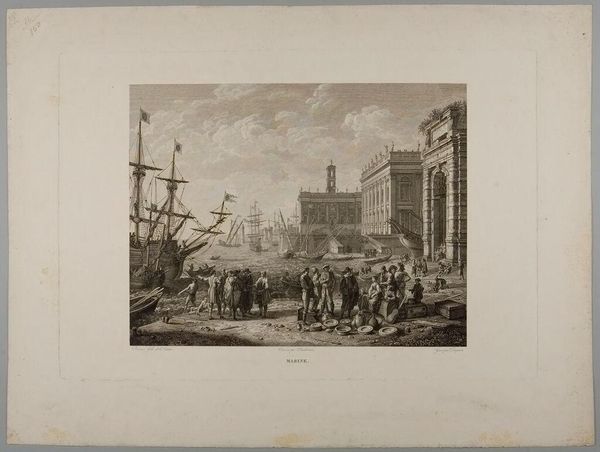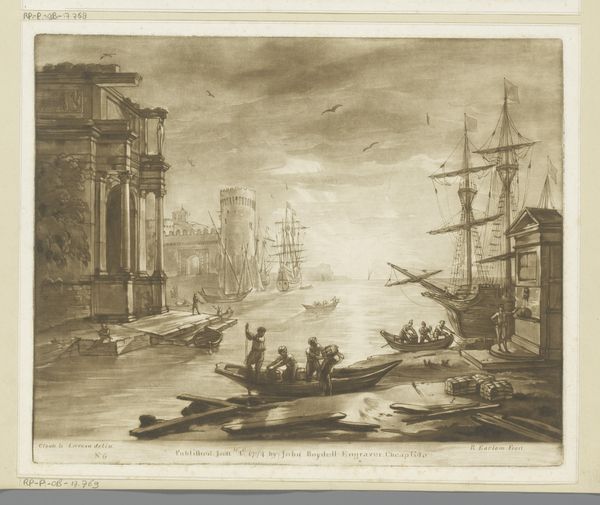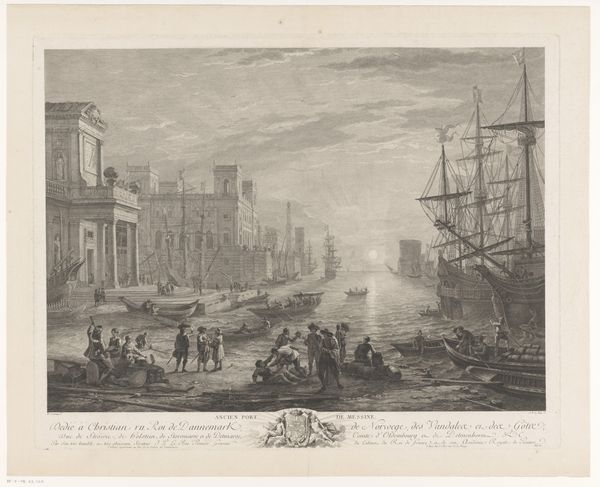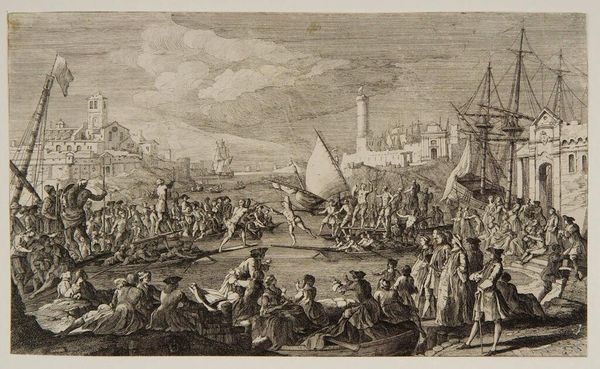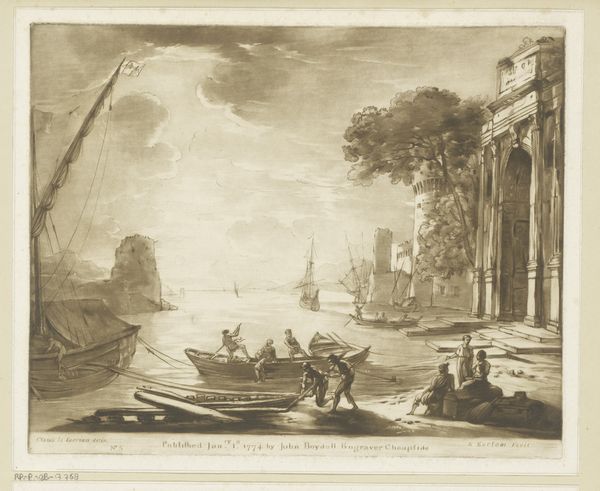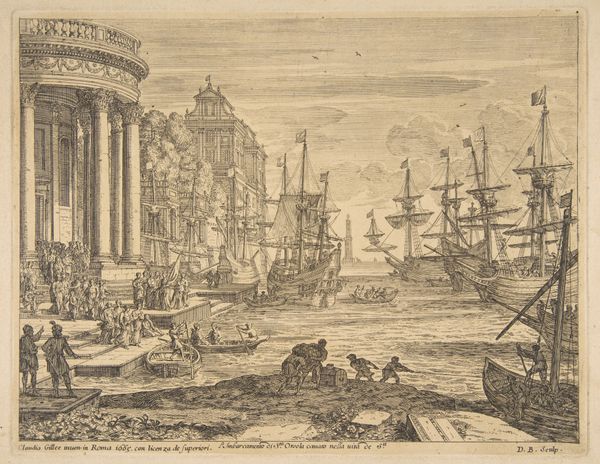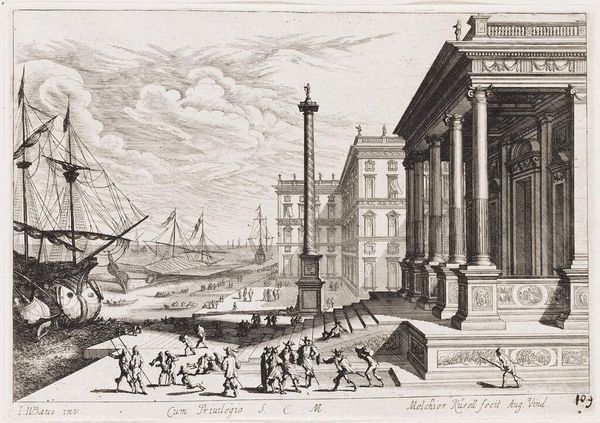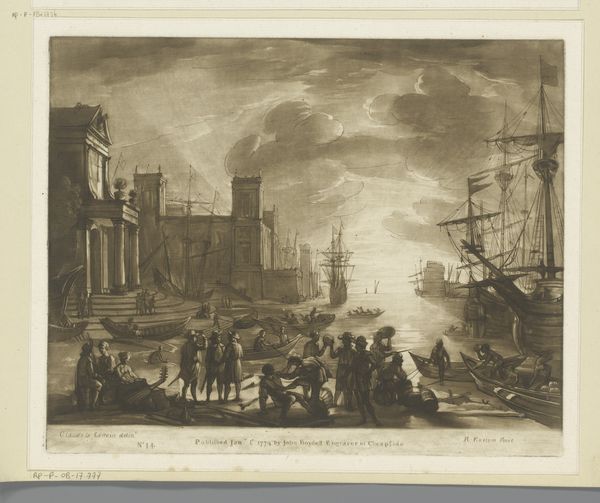
Copyright: CC0 1.0
Editor: This is James Fittler's "Embarkation of Saint Ursula," from around the late 18th or early 19th century, housed at the Harvard Art Museums. The scene is filled with classical architecture and bustling figures. What does this work say about the history of art and its role in society? Curator: Well, this engraving is fascinating! Fittler reproduces a scene steeped in both religious and historical significance. Saint Ursula's legend was a popular subject, often tied to ideas of pilgrimage and divine mission. But look at the setting, a romanticized vision of a port with grand architecture. How do you think this idealization shapes the narrative? Editor: I suppose it elevates the story, linking it to classical ideals and power structures of the time. It's almost like propaganda. Curator: Precisely! The image becomes more than just a depiction; it's a statement about the cultural values and aspirations of the society that produced and consumed it. Editor: That makes you think about the politics behind the image! Curator: Exactly. Images are rarely neutral. This piece shows how art served to construct and reinforce cultural narratives.
Comments
No comments
Be the first to comment and join the conversation on the ultimate creative platform.
